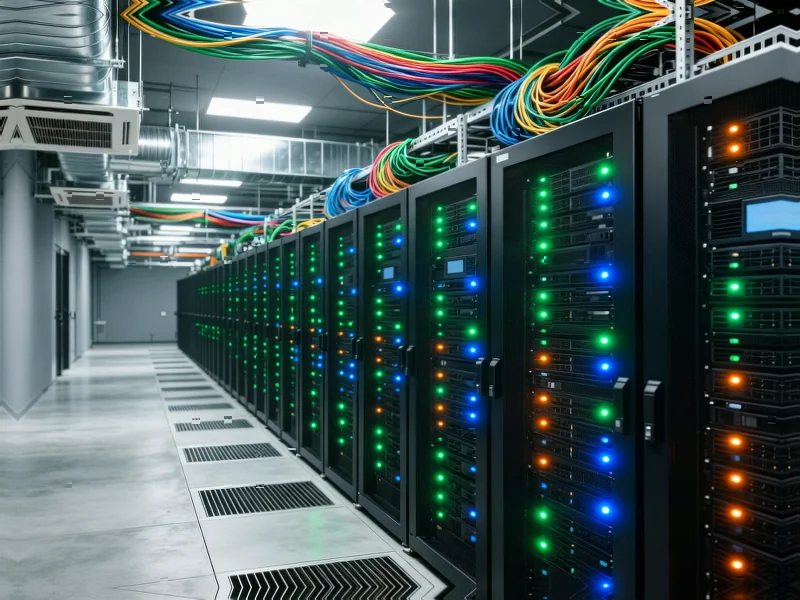According to DCD, Google has increased its capital expenditure estimates for 2025 to $91-93 billion, up from $85 billion predicted in Q2 and $75 billion in Q1. CFO Anat Ashkenazi revealed during the company’s Q3 2025 earnings call that the company spent $24 billion in the quarter alone, with the “vast majority” going to technical infrastructure—approximately 60% on servers and 40% on data centers and networking equipment. Major investments included a $15 billion data center project in Andhra Pradesh, India, $5.8 billion in Belgium infrastructure, and $9 billion commitments each to South Carolina, Oklahoma, and Virginia in the US. Despite this massive spending, Ashkenazi acknowledged the company remains in a “tight demand-supply environment” expected to continue through 2026, while depreciation costs grew 41% year-over-year to $5.6 billion. This escalating investment strategy raises critical questions about sustainability and returns in the AI infrastructure arms race.
Table of Contents
- The Unprecedented Scale of AI Infrastructure Demand
- Financial Discipline or Market Frenzy?
- The Hyperscale Triad’s Diverging Strategies
- Geopolitical Dimensions of Infrastructure Build-Out
- The Efficiency Paradox in AI Infrastructure
- Long-Term Horizons Versus Market Reality
- Related Articles You May Find Interesting
The Unprecedented Scale of AI Infrastructure Demand
What makes Google’s capex trajectory particularly remarkable is the context of modern AI compute requirements. Traditional cloud computing growth followed relatively predictable curves, but generative AI has created a step-function change in infrastructure demand. Each large language model training run can consume thousands of servers running for weeks, while inference workloads require distributed global capacity with low-latency requirements. The fact that Google is forecasting another “significant increase” in 2026 capex beyond the already massive $93 billion suggests the company sees no near-term plateau in AI infrastructure demand. This isn’t merely building for current needs—it’s betting that AI adoption across enterprises, governments, and consumers will continue accelerating at unprecedented rates.
Financial Discipline or Market Frenzy?
Ashkenazi’s comments about “rigorous process of assessing what the return could be” reveal the tension between financial discipline and competitive necessity. While Google portrays these investments as carefully calculated, the reality is that in infrastructure arms races, companies often must build capacity ahead of proven demand. The 46% quarter-over-quarter growth in cloud backlog to $155 billion provides some validation, but backlog doesn’t guarantee profitability or efficient capacity utilization. The rapid depreciation growth—up 41% YoY—indicates these assets are being consumed quickly, which aligns with the accelerated refresh cycles required for AI hardware. What’s particularly concerning is that even with this massive spending, Google still faces capacity constraints, suggesting the company may be playing catch-up in a market where demand is outstripping even the most aggressive build-out plans.
The Hyperscale Triad’s Diverging Strategies
Google’s approach stands in contrast to its major cloud competitors. Amazon Web Services has traditionally emphasized gradual, efficient capacity expansion with strong focus on utilization rates, while Microsoft has leveraged its enterprise relationships and hybrid cloud strategy. Google appears to be betting that massive, upfront infrastructure investment will create competitive advantages through scale and performance differentiation. The mention of being “the only hyperscaler that is really building offerings on our own models” highlights Google’s unique position of being both an infrastructure provider and AI innovator. However, this dual role creates inherent conflicts—competing with customers who might worry about Google’s own AI products versus their cloud services, while also requiring massive capital outlays that might not generate returns if the AI market experiences any slowdown.
Geopolitical Dimensions of Infrastructure Build-Out
The geographic distribution of Google’s investments reveals strategic positioning beyond mere capacity expansion. The $15 billion commitment in Andhra Pradesh, India aligns with both growing domestic Indian demand and positioning against Chinese cloud providers in emerging markets. The European investments in Belgium likely address both EU data sovereignty requirements and latency needs for European enterprises. Meanwhile, the concentrated US investments across multiple states suggest Google is building redundancy and disaster recovery capacity while also navigating the complex landscape of US energy availability and regulatory environments. This global footprint isn’t just about capacity—it’s about establishing presence in strategic markets where AI regulation, data governance, and competitive dynamics are still evolving.
The Efficiency Paradox in AI Infrastructure
Google’s emphasis on using AI to generate “nearly half of the company’s code” to drive efficiency highlights an interesting paradox. While AI demands massive infrastructure investment, companies are simultaneously using AI to optimize those very investments. However, this creates a self-reinforcing cycle where more AI-driven optimization requires more AI infrastructure, which then requires more optimization. The risk is that companies become trapped in an efficiency arms race where the savings from optimization are continually reinvested in additional capacity. More fundamentally, the sheer scale of these investments raises questions about whether the AI market can generate sufficient returns to justify hundreds of billions in cumulative hyperscale spending across all major providers.
Long-Term Horizons Versus Market Reality
The most critical question surrounding Google’s capex surge is the timeline for returns. Ashkenazi’s reference to assessing returns “over what time frame” suggests Google is taking a very long-term view, possibly 5-10 years. This aligns with infrastructure investment cycles but creates vulnerability to shorter-term market corrections. If enterprise AI adoption slows or if more efficient AI architectures emerge that reduce compute requirements, Google could find itself with significant overcapacity. The company’s confidence is bolstered by cloud revenue growth of 34% YoY and operating income increasing 85%, but maintaining these growth rates becomes increasingly challenging as the base expands. The 8.6% stock price increase following the earnings suggests investor optimism, but history shows that infrastructure bubbles often begin with enthusiastic market responses to massive capital deployment.



